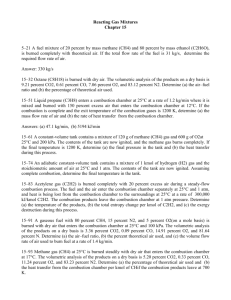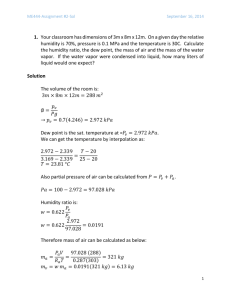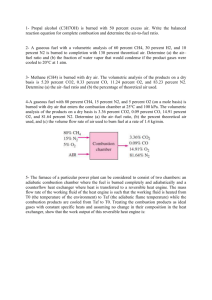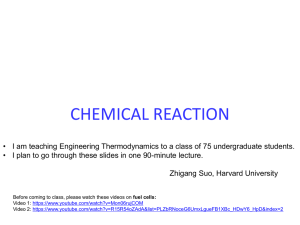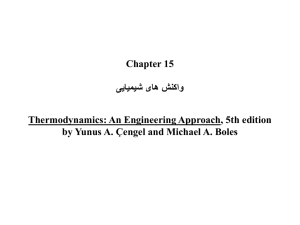HW-7, Ch
advertisement
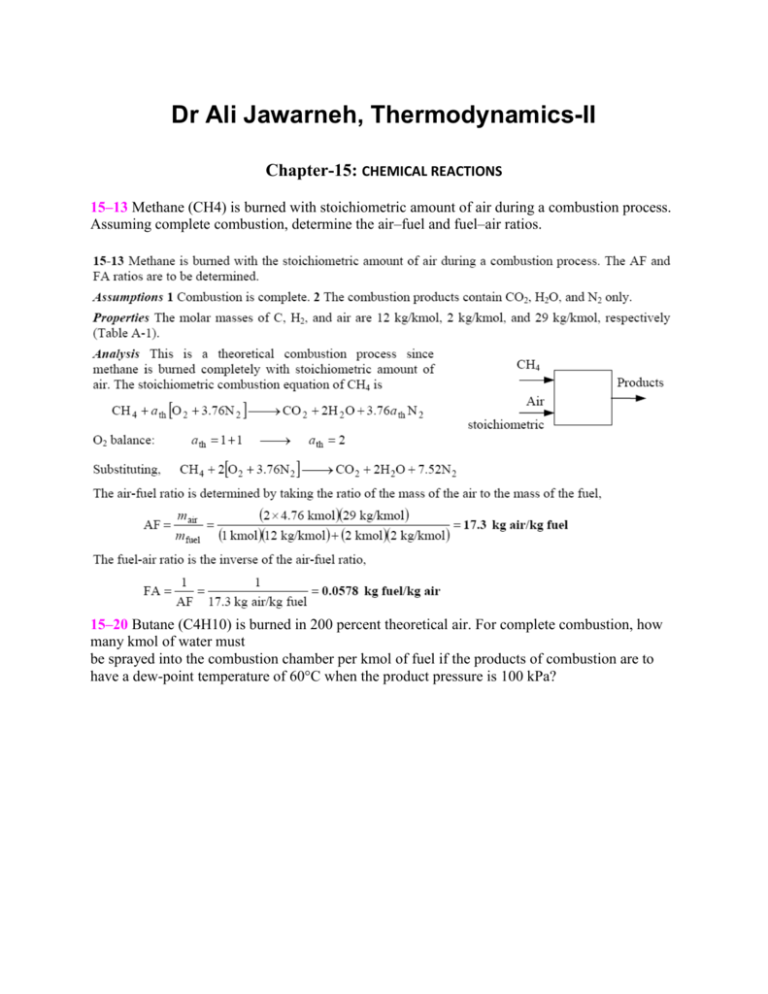
Dr Ali Jawarneh, Thermodynamics-II Chapter-15: CHEMICAL REACTIONS 15–13 Methane (CH4) is burned with stoichiometric amount of air during a combustion process. Assuming complete combustion, determine the air–fuel and fuel–air ratios. 15–20 Butane (C4H10) is burned in 200 percent theoretical air. For complete combustion, how many kmol of water must be sprayed into the combustion chamber per kmol of fuel if the products of combustion are to have a dew-point temperature of 60°C when the product pressure is 100 kPa? 15–31 A certain coal has the following analysis on a mass basis: 82 percent C, 5 percent H2O, 2 percent H2, 1 percent O2, and 10 percent ash. The coal is burned with 50 percent excess air. Determine the air–fuel ratio. 15–55 Benzene gas (C6H6) at 25°C is burned during a steady-flow combustion process with 95 percent theoretical air that enters the combustion chamber at 25°C. All the hydrogen in the fuel burns to H2O, but part of the carbon burns to CO. If the products leave at 1000 K, determine (a) the mole fraction of the CO in the products and (b) the heat transfer from the combustion chamber during this process. 15–61 A constant-volume tank contains a mixture of 120 g of methane (CH4) gas and 600 g of O2 at 25°C and 200 kPa. The contents of the tank are now ignited, and the methane gas burns completely. If the final temperature is 1200 K, determine (a) the final pressure in the tank and (b) the heat transfer during this process. 15–75 Octane gas (C8H18) at 25°C is burned steadily with 30 percent excess air at 25°C, 1 atm, and 60 percent relative humidity. Assuming combustion is complete and adiabatic, calculate the exit temperature of the product gases. 15–80 One kmol of H2 at 25°C and 1 atm is burned steadily with 0.5 kmol of O2 at the same state. The H2O formed during the process is then brought to 25°C and 1 atm, the conditions of the surroundings. Assuming combustion is complete, determine the reversible work and exergy destruction for this process. 15–83 Acetylene gas (C2H2) is burned completely with 20 percent excess air during a steadyflow combustion process. The fuel and the air enter the combustion chamber separately at 25°C and 1 atm, and heat is being lost from the combustion chamber to the surroundings at 25°C at a rate of 300,000 kJ/kmol C2H2. The combustion products leave the combustion chamber at 1 atm pressure. Determine (a) the temperature of the products, (b) the total entropy change per kmol of C2H2, and (c) the exergy destruction during this process.




